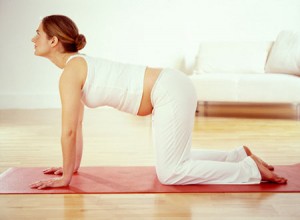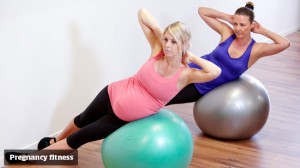With so much conflicting advice around what you should and should not do during pregnancy, trying to safely keep active during this time can be quite a confusing. As Physiotherapists, we are often asked if it is safe to do Pilates during pregnancy. Pilates is a perfect safe, low impact exercise with many great health benefits during pregnancy, even if you have never done Pilates before.
Low back and pelvic joint pain is a very common problem during pregnancy and occurs for a number of reasons. During the pregnancy your joints become more stretchy as a result of your body secreting a hormone, relaxin, it does this to prepare the pelvis to be able to stretch during the birth. This may sounds good but has the effect of making all of your joints loose and susceptible to injury. Your pelvic floor and abdominal muscles get stretched from the extra size and weight of the baby, making them weaker and less able to protect and control the joints.
Why is Pilates during pregnancy a good idea?
Pilates is a system of exercises that focuses specifically on recruiting your deeper core and stabilising muscles of the body, particularly your pelvic floor and abdominal wall. By strengthening, toning and improving control of these muscles, you are able to improve control of the joints of the pelvis and spine and decrease the chance of pain and injury in these areas. Pilates during pregnancy is also famous for helping new mums get their figures back after baby is born!
Pelvic floor issues post pregnancy are extremely common, often resulting in symptoms such as pain and incontinence. Performing Pilates during pregnancy and having a good understanding of how to turn these muscles on and ensuring that you keep them toned and strong during the pregnancy will dramatically lessen the chances of issues after the birth.
Another great reason to do Pilates during pregnancy is that Pilates is very adaptable. Most Pilates exercises can be modified as your body and abilities change. The modifications help you keep the intent of the exercise, but adjust the form to work for your body. As the bump grows your abdominal muscles separate to allow for the growing bu mp. When doing Pilates during pregnancy, avoiding heavy abdominal loading and heavy twisting type movements during this time is important to prevent the size of the separation from increasing. You will also reach a point where you are no longer be comfortable laying on your stomach. During the 2nd and 3rd trimester, while safe to lay on your back for short periods, it is not recommended that you stay in this position for extended periods as it may restrict the baby’s blood supply and regularly changing to alternative position is recommended.
mp. When doing Pilates during pregnancy, avoiding heavy abdominal loading and heavy twisting type movements during this time is important to prevent the size of the separation from increasing. You will also reach a point where you are no longer be comfortable laying on your stomach. During the 2nd and 3rd trimester, while safe to lay on your back for short periods, it is not recommended that you stay in this position for extended periods as it may restrict the baby’s blood supply and regularly changing to alternative position is recommended.
One of the important factors to consider when selecting a Pilates class while pregnancy is the experience of the instructors and size of the class. It is vitally important that you have quite close supervision of an experienced instructor to ensure that you perform the exercises safely and well and to ensure that as your body and ability levels change, you are provided with alternative exercises or positions to safely work in. Ideally an assessment with a real time ultrasound prior to attending, to ensure that you are able to switch on your core muscles well, particularly your pelvic floor, is a good idea.
A Pilates class involving appropriate exercise selection under the close supervision of an experienced instructor is a great way to stay fit and toned through the pregnancy and to assist in avoiding some of the common problems associated with pregnancy.


